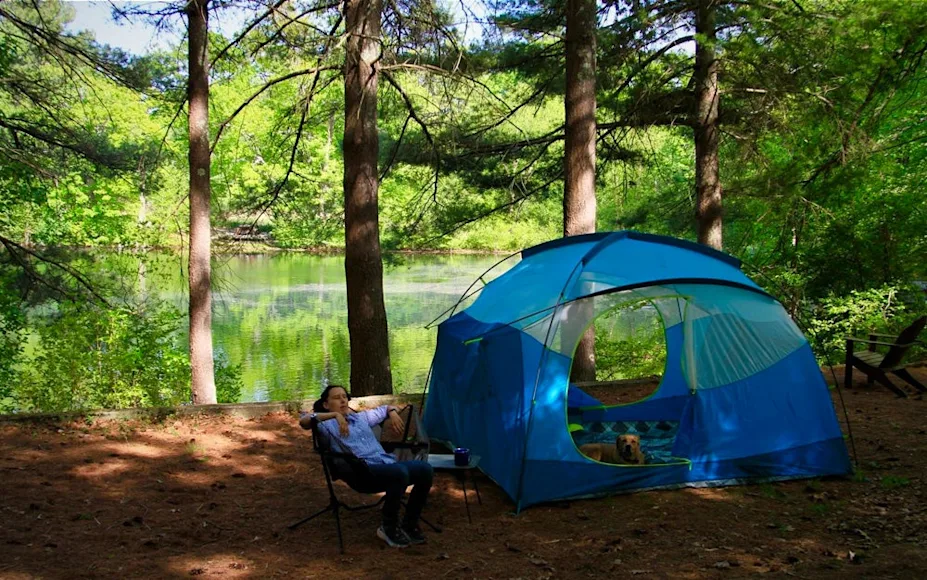_We may earn revenue from the products available on this page and participate in affiliate programs. Learn more ›
_
Best Overall
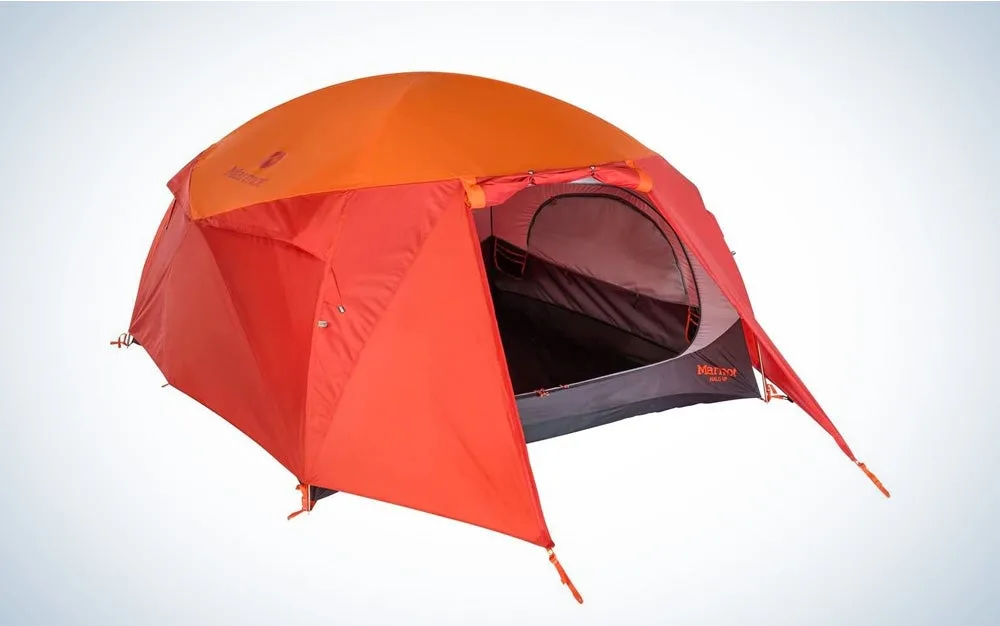
Marmot Halo 4 Person
Best for Bad Weather
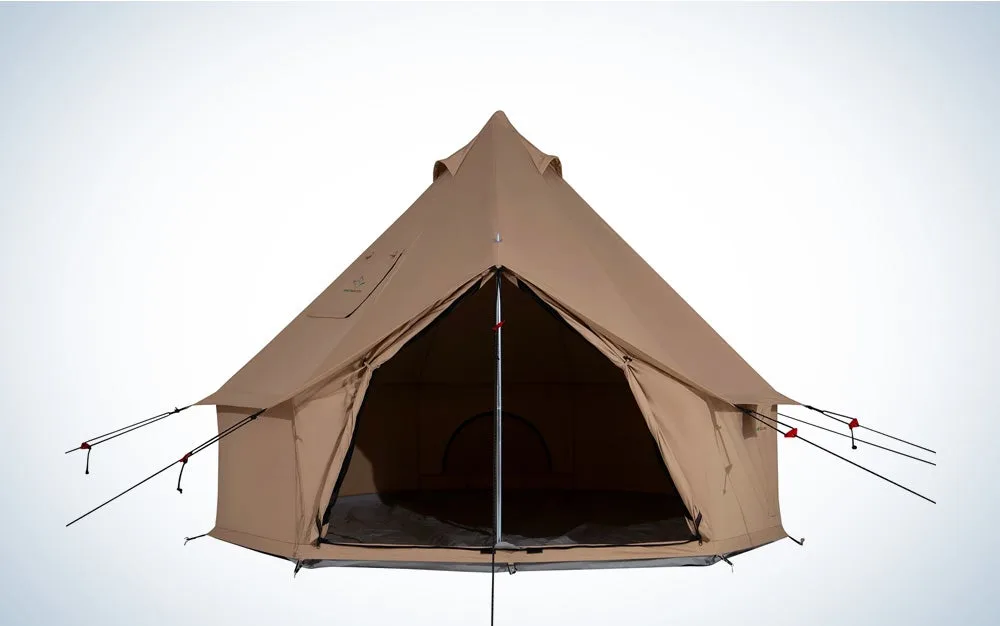
White Duck 10′ Regatta Bell Tent
Best Family Tent
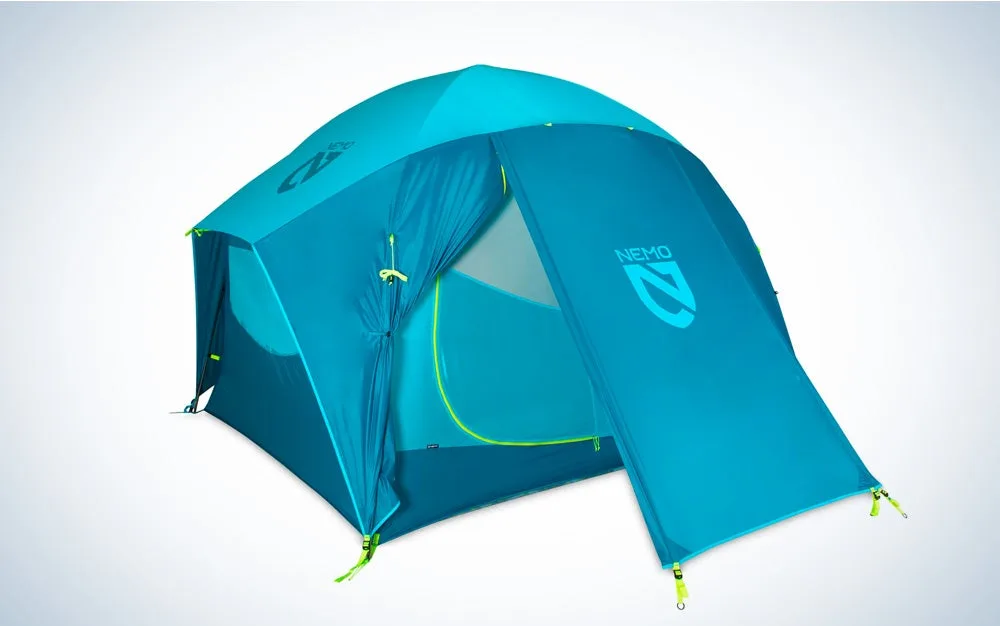
Nemo Aurora Highrise
Reliable 4 person tents will serve you well through years of camping and adventures. It is one of the most popular and versatile tent sizes on the market today. But deciding on a specific model can be a rather overwhelming experience for camping newbies. It’s important to consider things like materials, dimensions, and weight when selecting a tent. We rounded our top picks for the best 4 person tents and some things to consider when shopping for one.
Best Overall: Marmot Halo 4 Person
Best for Bad Weather: White Duck Regatta Bell Tent
Best Instant: Coleman Cabin Tent
Best Under $100: Core 4-Person Dome
Best Backpacking Tent: Big Agnes HV UL4
Best Lightweight: Kelty Discovery Basecamp
Best Family Tent: Nemo Aurora Highrise
Best Car Camping Tent: Eureka Timberline
How We Picked the Best 4 Person Tents
As an experienced camper for more than 15 years, I have used and tested my fair share of tents. I’ve also toughed it out in some of the worst storms the Midwest can dish out. This has helped me narrow down what features to look for in a tent that will keep me dry. Some of the other features we look for in quality tents include:
Rainfly: How much of the tent does the fly cover? Is it durable enough to withstand strong winds?
Quality of materials: Did the manufacturer use high denier fabric that will resist abrasion? What kind of zippers did they use for the entrances and windows? Are the poles built to last?
Dimensions: How efficiently does the tent utilize the available space? Is the tent tall enough for a person to stand up?
Weight: Is the tent light enough to be carried into the backcountry? Is it a heavier tent meant mostly for car camping?
Value: Do the features of the tent match the price point? Are there accessories that are sold separately from the tent that add to the costs?
Best 4 Person Tents Reviews and Recommendations
Best Overall: Marmot Halo 4 Person
Best Overall

Key Features
Dimensions: 8’ x 8’
Center Height: 4.9’
Weight: 13 Pounds, 6.5 Ounces
Pros
Rugged, encompassing rainfly
Lots of internal storage areas
Versatile vestibule
Cons
Storage bag uses thin fabric
Expensive
When it comes to features and functionality, the Marmot offers the best value on the market. The Halo 4 person utilizes a dual door and a vestibule that can also be tipped upwards to serve as an awning. Marmot also added lots of small interior pockets for keeping small valuables organized inside. This tent has an excellent rain fly that covers more of the exterior of the tent than many other options sold today. Subsequently, we can recommend this to anyone who wants something that will stay dry.
While this is technically a three-season tent, we have heard of people using the Marmot well into the winter months. The storage bag for this tent is a little less rugged than we would like, and the price tag of the tent is a little high. However, these are minor complaints for what is otherwise a very rugged and capable tent for serious campers.
Best for Bad Weather: White Duck 10′ Regatta Bell Tent
Best for Bad Weather

Key Features
Dimensions: 10’ diameter
Center Height: 7’ 5”
Weight: 51 Pounds
Pros
Four season tent that can handle all weather
Room to stand up inside
Pre-cut hole for a stove
Cons
Very heavy
The White Duck Regatta is a four-season tent that is built to handle the worst of nature’s wrath. This tent is built from army duck cotton canvas with a finish to repel water and resist harsh UV rays. We like this tent for hunters who need a warm base camp in the fall and winter. The tent has a five-inch pre-cut stove jack that allows the use of a wood stove to keep the interior toasty and warm. Another feature we like about this tent is the 7’ 5” center height.
The big downside is the 51-pound weight. Markedly, this tent will not be a serious backcountry tent unless you’re riding in on horseback or UTV. This is an expensive tent, but considering the features and materials used in the construction, we feel the price point is fair.
Best Instant: Coleman 4-Person
Best Instant
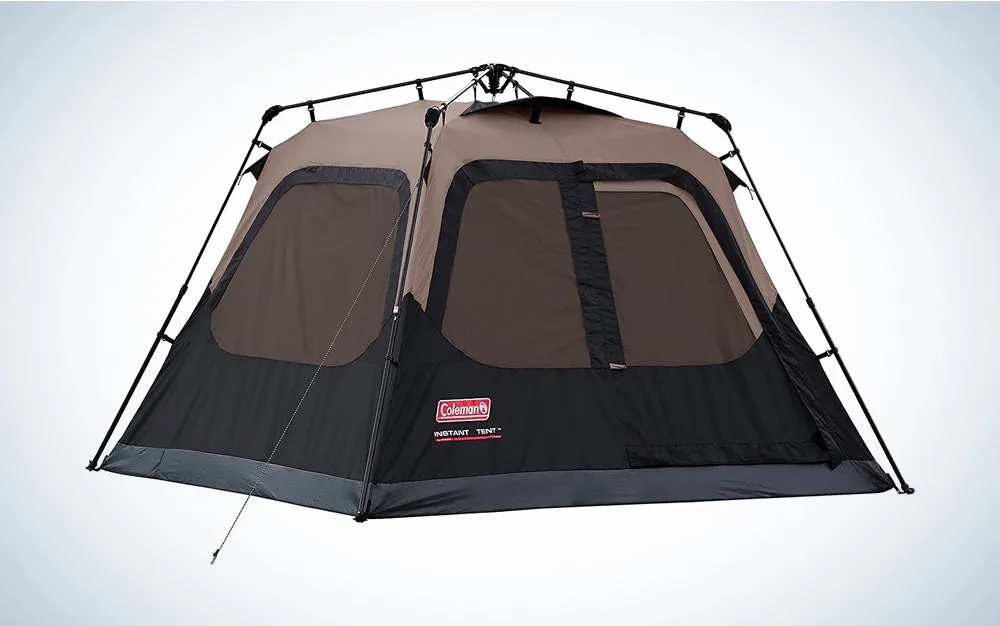
Key Features
Dimensions: 8’ x 7’
Center Height: 4’ 11”
Weight: 16 Pounds
Pros
Super fast setup
Cabin design maximizes floor space
Affordable
Cons
Not the best in bad weather
Setup and takedown of tents have gotten easier in recent years thanks to the introduction of “instant” tents. The Coleman cabin utilizes pre-attached poles for fast setup. These types of poles take all the guesswork out of the setup process. Just press a button and extend the pole. Coleman’s cabin style helps campers take full advantage of the entire layout better than some of the other tents on this list.
We recommend some waterproofing spray and seam sealer on this tent before your first trip out. This tent doesn’t do well in heavy rains. Despite that flaw, it is a good choice for beginners or anyone who is on a budget.
Best Under $100: Core 4-Person Dome
Best Under $100
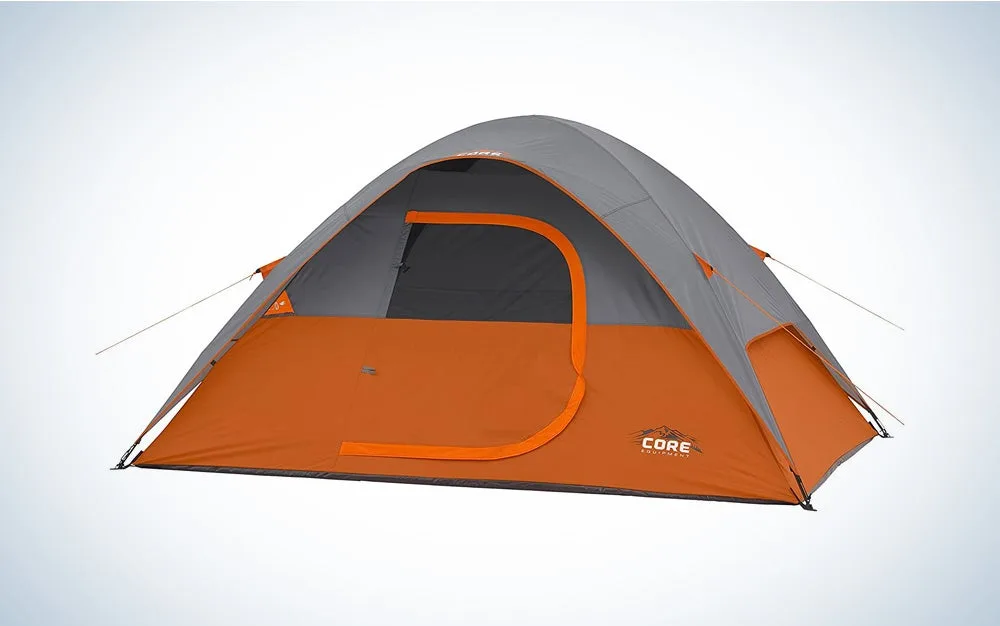
Key Features
Dimensions: 9’ x 7’
Center Height: 4.5’
Weight: 8.3 Pounds
Pros
Great price point
Electric port access
Organizing loft included
Cons
Needs waterproofing prep
Most four-person tents fall into a price range well over $100, but the Core is a notable exception. This tent includes features that you’d expect to find on more expensive tents. Notable here are the adjustable air intake vents and the electrical port access that is perfect for modern campgrounds. Furthermore, Core also includes a small gear loft that hangs from the ceiling. We like this tent for beginner car campers who just want something simple. It is going to be easy to setup, take down, and store when not in use.
Best Backpacking Tent: Big Agnes Spur HV UL4
Best Backpacking
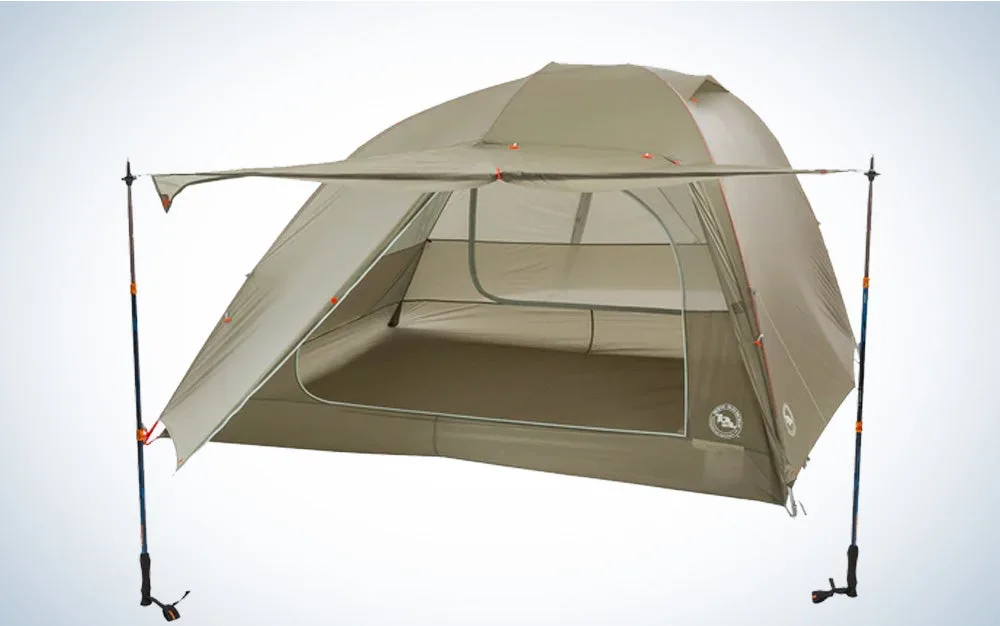
Key Features
Dimensions: 8’ x 7.1’
Center Height: 4.1’
Weight: 5 pounds, 11 ounces
Pros
Great for rainy camping
Simple setup
Roomy interior
Cons
Expensive
Tarp poles and footprint sold separately
Backpacking tents are usually not very roomy, and this makes getting dressed in the morning a real challenge. The Big Agnes Spur HV ultralight 4 is the exception to that rule thanks to a roomy 8’ x 7’ interior and four feet of headroom. This tent is great for larger campers who are tired of not having the space to stretch out. This tent gets rave reviews from users for its ability to seal water out, chiefly because of the tent’s 1,200mm waterproof polyurethane coating. Big Agnes also tapes the seams before this tent ever leaves the factory.
The downside to this tent is the $800 price tag. Big Agnes also sells accessories, like the footprint and tarp poles, separately. At 5 pounds, 11 ounces, it’s a little heavier than we’d like for a backpacking tent. However, it’s also one of the lightest four-person tents out there.
Best Lightweight: Kelty Discovery Basecamp 4 Person Tent
Best Lightweight

Key Features
Dimensions: 8’ x 6.5’
Center Height: 4.8’
Weight: 7 Pounds, 8 ounces
Pros
Affordable
Simple setup
Unique colors
Cons
Some reported zipper issues
Does not ventilate well with fly on
Kelty manufactures solid, affordable camping gear, and the Discovery Basecamp 4 is a great lightweight option at a little over seven pounds. This tent has a simple fiberglass pole design with a smaller footprint. It makes for a solid car camping tent or a simple backpacking tent for an overnighter. There are some reported zipper issues with this tent, and the rain fly can cut off ventilation. This wouldn’t be our top choice for extremely hot weather. However, for $125, this is one of the lightest and most affordable four-person tents being made today.
Best Family Tent: Nemo Aurora Highrise 4 Person
Best Family Tent

Key Features
Dimensions: 8.3’ x 7.5’
Center Height: 6.25’
Weight: 15 Pounds
Pros
Heavy fabric floor
Tall center height
Versatile vestibule
Cons
Some issues with wind
The biggest selling point of the Nemo is the extremely durable 150-denier floor that is designed to take a real beating. It’s perfect for families with small children who are rough on tents. Nemo also gave the interior of the floor a pattern that makes it feel just a little bit cozier than a standard tent. Additionally, the high center makes it easier to walk around inside for the taller members of the family. Kelty also gave this tent another unique feature in the form of nightlight pockets that hold a headlamp and diffuse the light.
The biggest reported issue with this tent is that it does not handle high winds very well. The taller design makes the interior roomier but does the tent no favors on resistance. Still, for the price point and functionality of the space, this is a solid choice for smaller families.
Best Car Camping Tent: Eureka Timberline 4-Person
Best Car Camping Tent

Key Features
Dimensions: 7’ x 8.5’
Center Height: 4’ 10”
Weight: 8 pounds, 8 ounces
Pros
Simple and easy to set up
Stays bone dry during rains
Extremely durable fabric
Cons
Weight
Loops and shock corded poles could be better
The Eureka Timberline is a classic A-frame tent design that the company has been manufacturing for decades. I’ve owned mine for about 15 years, and it is still going strong to this day. During that time, I subjected the Timberline to rain, wind, mud, and more. Out of all the tents I own, none can match the ease and simplicity of setting this one up. I have gotten to the point where I can have this totally set up in less than five minutes.
There are some downsides to these tents, mainly that they aren’t as durable as they were 35 years ago. Mine is still in good shape, but I have noticed stretching of the shock cording of the poles. I also noticed the same for the cord loops that attach the tent body to the poles. Otherwise, the Timberline has served me extremely well over the years for casual car camping trips of three to five days.
What to Consider When Choosing a Tent
Just like with six and eight-person tents, the term “four-person tent” is something of a misnomer, at least in my opinion. The footprint for most tents of this size is usually better suited to solo campers, couples, or families with very young children. For more than four people, you will need a larger family camping tent
. We recommend looking closely at the dimensions of a tent. Take the time to mark out the footprint of the tent on the floor at home because this will help you visualize the size better. However, size isn’t the only factor to consider. The following are equally important considerations when choosing this kind of tent.
Weather and Seasons: If you are only planning to camp during warm weather, this is less of a worry, but for anyone wanting to camp in spring, fall, or even winter
, you will need a multi-season tent. This style of tent will usually hold up better during heavy rains and winds than something designed only for the summer months.
Weight: For anyone planning to hike into the backcountry, weight matters considerably. There comes a point where a tent becomes too big and too heavy to be easily carried in your backpack. Generally, you probably shouldn’t go over three to five pounds for a tent used for this purpose. If you primarily plan to car camp, it becomes less of a factor.
Accessories and Bonus Features: Some companies sell extras for their tents, like footprints, gear lofts, and vestibules separate from the tent itself. And they can be rather expensive. Additionally, I like to look for the little features, things like a port for an extension cord in established campgrounds or a built-in lighting system.
FAQs
Q: Should my tent have a vestibule?
Having camped in tents with and without a vestibule, I personally prefer having one because the vestibule effectively acts as a secondary storage area and a place to put on and take off my shoes or boots. Vestibules help considerably in keeping a tent clean because you aren’t dragging dirt into the main part of the tent with you.
Q: Are expensive tents worth it?
In my experience, expensive tents are usually worth the price tag. Although we do believe there are some good deals to be had on lower-priced tents, expensive tents usually utilize better materials, especially in terms of poles and waterproofing. I camped with friends before who ended up tossing their cheap tents in the nearest dumpster before the trip was over due to flooding. Then they had to make an emergency trip to Wal-Mart for a new one. That’s not a fun experience, and consequently, we recommend buying the best tent you can afford rather than the cheapest.
Q: Should I get a waterproof or water-resistant tent?
You will rarely find a camper who regrets buying a waterproof tent over a water-resistant one. Unless you plan to camp exclusively in dry environments, you will end up with your tent in the rain at some point. In my experience, water-resistant tents are usually much more prone to leaking, but they also come at a lower price point. While water-resistant tents don’t hold out water as well, the water-shedding abilities can be drastically improved using products like Nikwax waterproofing spray
, a seam sealer, and adhesive.
Best 4 Person Tents: Final Thoughts
Best Overall: Marmot Halo 4 Person
Best for Bad Weather: White Duck Regatta Bell Tent
Best Instant: Coleman Cabin Tent
Best Under $100: Core 4-Person Dome
Best Backpacking Tent: Big Agnes HV UL4
Best Lightweight: Kelty Discovery Basecamp
Best Family Tent: Nemo Aurora Highrise
Best Car Camping Tent: Eureka Timberline
The Marmot was an easy choice for best overall because of its value and weatherproof ability. The quality of the poles, rainfly, and weatherproofing on the seams make for a well-designed tent that is incredibly versatile.
Why Trust Us
For more than 125 years, Field & Stream has been providing readers with honest and authentic coverage of outdoor gear. Our writers and editors eat, sleep, and breathe the outdoors, and that passion comes through in our product reviews. You can count on F&S to keep you up to date on the best new gear. And when we write about a product—whether it’s a bass lure or a backpack—we cover the good and the bad, so you know exactly what to expect before you decide to make a purchase.

